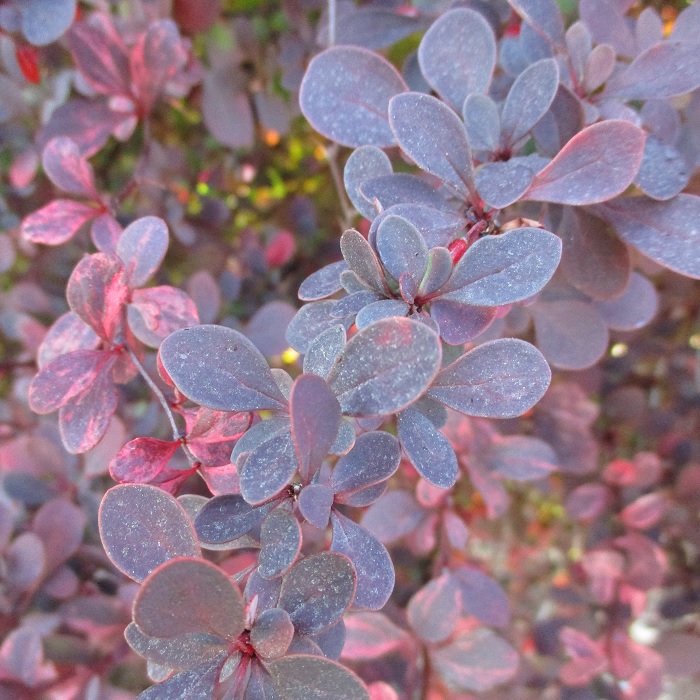UNITED STATES—Autumn foliar color is not the concern yet. It develops later as deciduous plants defoliate for winter. Purplish, reddish, yellowish, bluish or gray foliar color that can be seen now is provided by plants that are colorful while actively growing. Almost all of this sort of foliage is most colorful when it is young and fresh, early in spring. Then, through summer, some of the best foliar color fades.
This process is perfectly natural. It does not imply that anything was done improperly, or that plants were not given what they need. In fact, most plants with colorful foliage would rather be green. They are mutants that were reproduced specifically for their distinctive color. Some try to revert back to green by producing greener shoots that grow faster because they have more chlorophyll.
Photinia is an odd one. By now, The rich green foliage shows no clue that it was rich reddish bronze when it developed early in spring. The foliage did not really fade. It merely matured. Then there are the newer cultivars of purple leaf plum, which maintain their color from spring to autumn. It is amazing that such darkly colored foliage that seems be devoid of chlorophyll can photosynthesise!
Some plants maintain their color better than others. Gray or bluish foliage is always gray or bluish; but admittedly, blue spruce and blue junipers are not quite as striking now as they were earlier. If red fountain grass and bronze aonium fade, it will be too slight to notice. Stems of bronze, gold or striped cannas that fade after bloom get pruned out in favor of more colorful unbloomed stems.
‘Forest Pansy’ redbud, ‘Summer Chocolate’ silk tree and ‘Sunburst’ honeylocust are notorious for fading. By now, the formerly richly bronzed redbud and silk tree merely seem to be stained with coffee. Golden honeylocust might have been bright yellow in spring, but now just looks sickly. Gold tipped and silver tipped deodar cedars can likewise be a bit pale. Bronze elderberries hold color well, but golden elderberry might now be chartreuse.
Highlight: barberry
It may not look too nasty, but barberry, Berberis thunbergii, is the sort of small hedge that one goes through only once. It does not have big strong branches to hold anyone back. In fact, the limber branches are quite twiggy. The tiny spines are not impressive either, and might go unnoticed by cursory observation. Yet, they are sharp enough and plentiful enough to make quite an impression!
Because it is so unpleasant to prune, barberry should probably be planted where it has room to grow as big as it wants to without bothering anyone. If it is too close to walkways, it will either offend whomever bumps into it, or whomever needs to prune it to keep it out of the way. Mature plants will unfortunately need to be pruned eventually, so that old deteriorating stems can be groomed out.
The most popular cultivars of barberry have dark reddish or purplish foliage. A few are variegated with white; and a few have golden foliage. Green barberries are now uncommon. The tiny leaves turn bright orange in autumn before winter defoliation. Densely dwarf cultivars may not get much taller than two feet. Taller cultivars might get taller than six feet. Some barberries are very vertical.





